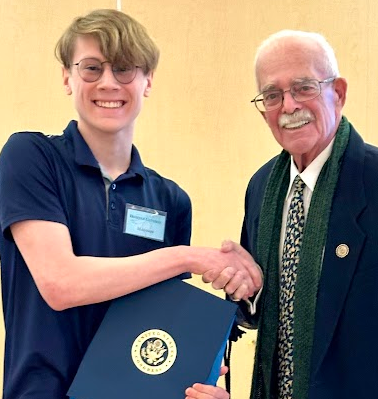It’s safe to assume nobody reading this is unaware of the election in November. Virginians, including many Madison students, will be deciding between Vice President Kamala Harris and former President Donald Trump for the 47th Presidency of the United States. Often overlooked are the many senate races across the nation, where voters decide who to represent their state in Congress. Virginia’s race between Democrat Tim Kaine and Republican Hung Cao is certainly important, although all available data shows a clear victory for incumbent Kaine. Partisan control of the higher legislature will come down to key races in a few swing states.
Ohio, Montana and Nebraska are all turning out to have very contentious Senate races, although by-and-large strongholds for Donald Trump and Republicans in recent elections. Each of these candidates, Democrat or Republican, could sway the control of power in the Senate, as it’s split 50/50 after the resignation of West Virginia’s Joe Manchin. Democrats are on defense this time around, with Republicans only needing to dislodge one of their two incumbents in Ohio or Montana.
Senator Sherrod Brown (D-OH) has managed to stay in the senate for the past 18 years. Brown, throughout his tenure, has maintained a strong connection with the steel working middle class. He’s also been able to balance his democratic allegiance by distancing from more controversial party platforms, thus keeping his fragile status as a red-state-Democrat. Challenger Bernie Moreno has centered his electoral strategy around tying himself to the more popular Trump, while tying Brown to Biden and Harris, who are thoroughly unpopular for Ohioans. While the strategy of using one’s party against them holds historical credence, Brown still seems to be ahead in the polls by tight margins.
Senator Jon Tester (D-MT) in Montana, another red-state Democrat, is facing a long road to victory in the overwhelmingly Republican state of Montana. This, coupled with the strength of his opposition, former Navy SEAL Tim Sheehy, puts Tester in hot water. Tester’s strategy has remained stagnant over the past 18 years, centered around connecting with Montana’s farming population, as a former farmer himself. Although a powerful strategy for getting republicans to split their senate votes and elect him, heightened political polarization seems to be whitling away that strategy. Sheehy is leading Tester by considerable numbers in the polls, meaning Tester’s uphill battle is getting steeper.
Senator Deb Fischer (R-NE), a Republican, has not yet experienced a close election in her career – Nebraska is one of the most solidly red states in the country – but that may all change, in the race against Independent Dan Osborn. Osborn is polling exceptionally close to Fischer, even tying her in a couple. In a state where there’s a 2-1 ratio of registered Republicans to Democrats, Fischer is one of the most unpopular senators in the nation. Holding views that cross party lines, Osborn is a former union leader and a current metalworker, and if elected, promises to fight for the working-man, as well as caucusing with neither party.
As Election Day looms closer, voters— especially in Ohio, Montana and Nebraska— will be electing the senators that decide our nation’s future. With races this intense and stakes this high, it’s all more than worth keeping an eye on.



